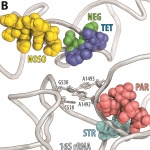
News • Diagnostic lab system
DxM MicroScan WalkAway System now available on the market
Beckman Coulter announced commercialization of its DxM MicroScan WalkAway system, a diagnostic solution for bacterial identification and antibiotic susceptibility testing for microbiology laboratories. The DxM MicroScan WalkAway system uses direct minimum inhibitory concentrations (MIC) for detection of antimicrobial resistance, offering greater confidence in results through gold-standard…


























